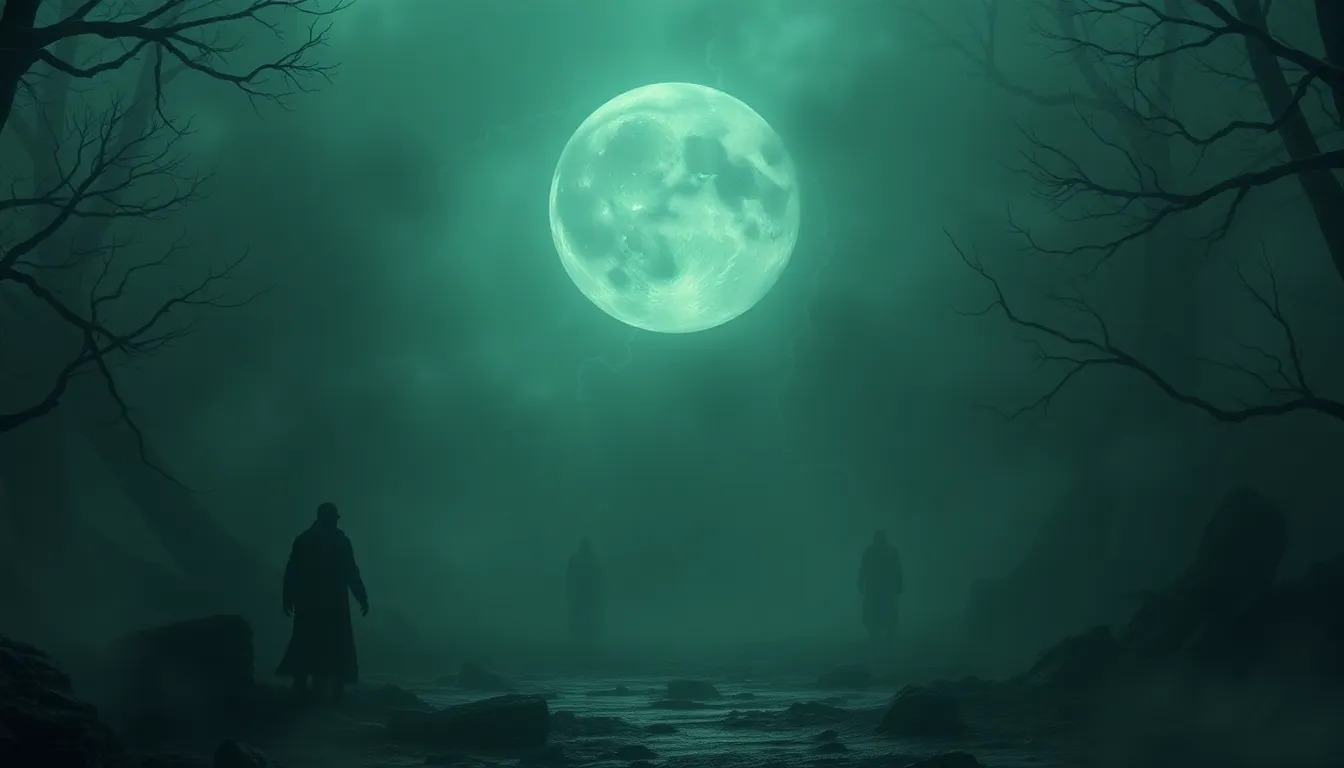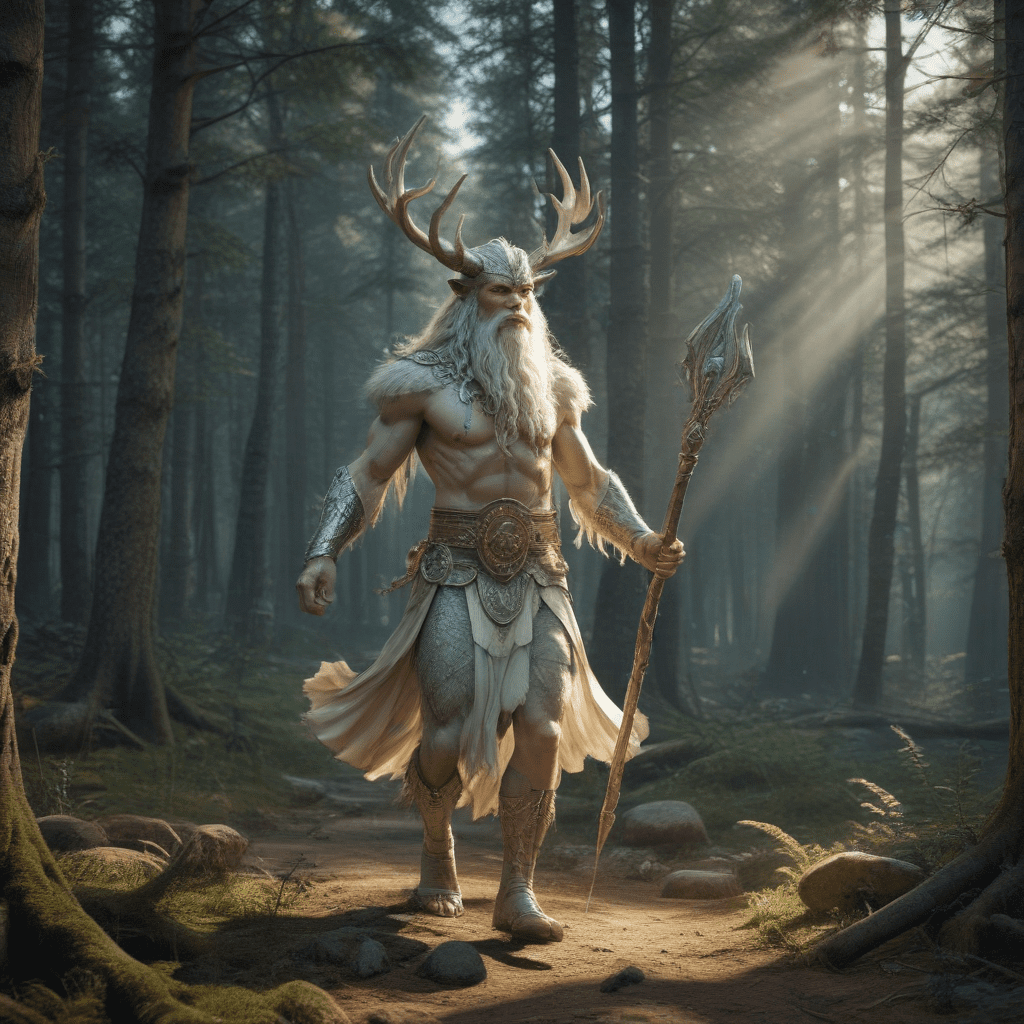Indonesian Mythology: A Tapestry of Supernatural Guardians
Indonesia, a land of diverse landscapes and cultural traditions, is also a realm brimming with captivating mythology. From the towering mountains to the sprawling forests, Indonesia's natural beauty is interwoven with tales of mythical guardians, spirits who protect sacred places and uphold the balance of the natural world. Indonesian mythology offers a window into the beliefs and values of the people, revealing a deep reverence for the environment and its unseen forces.
The Role of Guardians in Indonesian Folklore
In Indonesian folklore, guardians play a pivotal role in maintaining harmony between the human world and the spirit realm. They are often seen as protectors of sacred sites, natural wonders, and cultural heritage. These guardians, imbued with supernatural powers, ensure the well-being of communities and the preservation of ancient traditions. Their presence serves as a reminder of the interconnectedness between humans and the natural world.
The Cosmic Guardians: From Mountains to Oceans
Indonesia's vast archipelago is home to a diverse array of guardians, each with unique roles and powers. These celestial beings, often depicted as mythical creatures, preside over different elements and landscapes. Some examples include:
- Naga: Serpent-like beings who are associated with water and often guard springs, rivers, and oceans. They are also believed to represent fertility and prosperity.
- Garuda: A majestic bird-like creature, often depicted as having a human face and eagle wings. Garuda is revered as the mount of the Hindu god Vishnu and represents strength, power, and courage.
- Dewata: Divine beings who represent various aspects of nature, such as wind, thunder, and rain. They are associated with specific regions and are believed to control the forces of nature.
- Jin: Supernatural beings who can be either benevolent or malevolent, depending on their nature and intentions. They are often associated with sacred places and are believed to guard them against intruders.
These cosmic guardians are not merely symbolic figures; they are deeply embedded in the cultural consciousness of the Indonesian people. Their stories are passed down through generations, serving as a reminder of the interconnectedness of all beings and the importance of respecting the natural world.
The Spirit World: Protecting Sacred Sites
In Indonesian mythology, sacred sites are often believed to be protected by spirits known as "hantu" or "dewa". These spirits are not necessarily malevolent; they are simply guardians who watch over the site and its surroundings. They are believed to be sensitive to human behavior and will punish those who disrespect the sacred nature of the place.
Examples:
- Gunung Merapi (Mount Merapi): This active volcano in Central Java is considered a sacred site and is said to be protected by the spirit of Mbah Petruk, a powerful guardian who is revered by the local people.
- Borobudur Temple: This magnificent Buddhist temple in Java is also said to be protected by guardian spirits who ensure its preservation and safety.
These spirits are considered to be the unseen protectors of the cultural and historical heritage of Indonesia. Their presence serves as a reminder of the profound connection between humanity and the spirit world.
Forest Spirits: Keepers of the Jungle’s Secrets
Indonesia's vast rainforests are known for their biodiversity and are also believed to be inhabited by a variety of forest spirits. These spirits, often depicted as animal-like beings or humanoids with supernatural powers, guard the secrets of the jungle and ensure its ecological balance.
Examples:
- Kelingking: A mythical creature that is said to inhabit the forests of Kalimantan. This spirit is associated with the forest and is believed to possess magical powers.
- Tuyul: A mischievous spirit that is often depicted as a small child. Tuyul is known for stealing money and other valuables and is believed to be controlled by a human sorcerer.
The belief in forest spirits underscores the importance of respecting the natural world and its inhabitants. These spirits are seen as custodians of the forest, ensuring its health and resilience.
Forest Spirits: Keepers of the Jungle’s Secrets
Indonesia's vast rainforests are known for their biodiversity and are also believed to be inhabited by a variety of forest spirits. These spirits, often depicted as animal-like beings or humanoids with supernatural powers, guard the secrets of the jungle and ensure its ecological balance. They are believed to be protectors of the forest, ensuring its health and resilience. Respecting these spirits is crucial for maintaining harmony with nature.
Examples:
- Kelingking: A mythical creature that is said to inhabit the forests of Kalimantan. This spirit is associated with the forest and is believed to possess magical powers, often appearing as a large, hairy creature. Legend has it that Kelingking can shapeshift and communicate with animals. Local communities believe that encountering Kelingking is a sign of good fortune.
- Tuyul: A mischievous spirit that is often depicted as a small child, usually wearing a red shirt and carrying a sack. Tuyul is known for stealing money and other valuables, often blamed for missing items or sudden financial losses. People believe the Tuyul is controlled by a human sorcerer who uses it for personal gain.
The belief in forest spirits underscores the importance of respecting the natural world and its inhabitants. Stories about forest spirits serve as cautionary tales, reminding people to act responsibly and sustainably within the forest environment.
Water Guardians: From Rivers to Seas
The vast expanse of Indonesia's oceans and rivers are also believed to be protected by powerful water guardians. These spirits, often depicted as serpent-like beings, mythical sea creatures, or powerful water deities, are responsible for maintaining the balance of the water cycle and ensuring the safety of those who navigate the waters.
Examples:
- Naga: Serpent-like beings, often depicted as having scales and a human-like face, are associated with water and often guard springs, rivers, and oceans. They are believed to control the flow of water, influencing the weather and the abundance of fish. Some tales describe Nagas as benevolent beings who protect fishermen and travelers, while others depict them as powerful beings who can inflict harm on those who disrespect the waters.
- Bujang Sapu: A mythical creature that is said to inhabit the waters of the Sunda Strait between Java and Sumatra. This spirit, often depicted as a giant crab, is known for its enormous size and strength. Some legends claim Bujang Sapu is a guardian of the strait, protecting mariners from storms and dangerous currents.
- Nyai Roro Kidul: A powerful water spirit, often depicted as a beautiful woman clothed in white, who is believed to rule over the Southern Ocean (the Indian Ocean) off the coast of Java. Legend has it that she is capable of controlling the tides and storms, and her presence is said to be both fearsome and revered.
These water guardians are a reminder of the power and mystery of the oceans and rivers. Their presence is a reminder that humans must respect the balance of nature and treat the waters with reverence.
Mountain Spirits: Guardians of the Peaks
Towering mountains, known as "gunung" in Indonesian, are considered sacred places and are often believed to be the dwelling place of powerful mountain spirits. These spirits, often depicted as humanoid figures or mythical creatures, are responsible for protecting the mountains and their surrounding areas.
Examples:
- Mbah Petruk: A powerful guardian spirit of Mount Merapi, an active volcano in Central Java. Mbah Petruk is deeply respected by the local community who believe he influences the volcano's activity and protects the surrounding villages. Volcanic eruptions are often seen as manifestations of Mbah Petruk's power, and offerings are made to him to appease him and ensure the safety of the community.
- Dewata: Divine beings who represent various aspects of nature, such as wind, thunder, and rain, are often associated with mountains. They are believed to control the weather and influence the prosperity of the land. Offerings are often made to them in the hope of receiving their blessings and protection.
Mountain spirits are a reminder of the powerful forces that shape the land. They are also a symbol of the strength and resilience of the people who live in mountainous areas. Their stories serve as a reminder of the importance of respecting nature and living in harmony with the environment.
The Mythological Roots of Sacred Place Protection
Indonesia's rich mythological tradition has played a crucial role in shaping the country's cultural landscape and shaping the deep reverence for sacred places throughout the islands. The myths and legends that are passed down through generations provide invaluable insights into the values, beliefs, and cultural practices of the Indonesian people.
The belief in guardian spirits is deeply rooted in the concept of animism, which is the belief that spirits inhabit natural objects and places. This belief, prevalent in many indigenous cultures, emphasizes the interconnectedness between humans and the natural world, recognizing the spiritual significance of all living things.
The concept of sacred places is further reinforced by the influence of Hinduism and Buddhism. These religions have played a significant role in Indonesian culture, introducing the idea of divine beings who preside over specific locations, giving rise to the belief in powerful deities associated with mountains, rivers, and forests.
The Influence of Animism and Hinduism
The deep reverence for sacred places in Indonesian culture stems from a complex interplay of animistic beliefs and the influence of Hinduism and Buddhism.
Animism, the belief that spirits inhabit the natural world, plays a central role in Indonesian mythology, fostering a sense of connection between humans and the environment. The belief in guardian spirits, often depicted as mythical creatures, reinforces the idea that sacred places are protected by mystical forces that must be respected.
The influence of Hinduism and Buddhism further deepens the concept of sacred places. These religions introduced the idea of divine beings who preside over specific locations, such as mountains, rivers, and forests. This belief system, with its emphasis on sacred sites and rituals, has further strengthened the reverence for these places in Indonesian culture.
The Modern Relevance of Guardians in Indonesian Culture
Despite the advancements of modern society, the belief in guardian spirits remains a vital part of Indonesian culture. These stories, passed down through generations, continue to shape the way people view and interact with their environment.
The belief in guardians serves as a reminder of the interconnectedness between humans and the natural world. It encourages people to respect and protect sacred places, ensuring the preservation of cultural heritage and the ecological well-being of the environment.
The modern relevance of guardian spirits can be seen in:
- Environmental conservation: The belief in guardians of nature motivates people to protect the environment, recognizing the spirit world's role in maintaining ecological balance.
- Community cohesion: These stories strengthen community bonds, fostering a sense of shared responsibility for protecting sacred places and maintaining cultural traditions.
- Tourism potential: The rich mythology surrounding guardian spirits attracts tourists, generating economic benefits and providing opportunities to share cultural heritage.
Theories on the Origin and Evolution of Guardian Myths
The origins and evolution of guardian myths are complex, influenced by various factors such as oral traditions, the influence of different religions, and the historical experiences of the Indonesian people.
- Oral traditions: The stories of guardian spirits were passed down through generations, evolving over time, shaped by the experiences and beliefs of each community. These oral traditions adapted to local environments and cultural practices, resulting in a diverse array of myths and legends.
- Religious influences: The arrival of Hinduism and Buddhism in Indonesia further enriched the existing beliefs, introducing new gods and deities and expanding the concept of sacred places. This fusion of indigenous beliefs and religious doctrines created a complex and multifaceted mythology.
- Historical experiences: The stories of guardian spirits also reflect historical events and cultural practices. For example, the belief in water guardians may have arisen from the dangers of sailing in treacherous waters, while stories of forest spirits may reflect the importance of respecting the forest and its resources.
The study of guardian myths provides valuable insights into the history, culture, and beliefs of the Indonesian people. It showcases the dynamism of mythology and its ability to adapt and evolve across generations.
FAQ
Q: What are some of the most famous sacred places in Indonesia?
A: Indonesia is home to numerous sacred places, including temples, mountains, and forests. Some of the most famous include Borobudur Temple, Gunung Merapi, and the rainforest of Kalimantan.
Q: Why are guardians important to Indonesian culture?
**A: ** Guardians represent the deep reverence for nature and the belief in the spiritual significance of the environment. They symbolize the interconnectedness between humans and the spirit world and serve as reminders to respect the balance of nature.
Q: How do guardians relate to environmental conservation?
A: The belief in guardian spirits encourages people to protect the environment, recognizing the spirit world's role in maintaining ecological balance. By respecting these spirits, people consider it their duty to preserve sacred places and natural resources for future generations.




